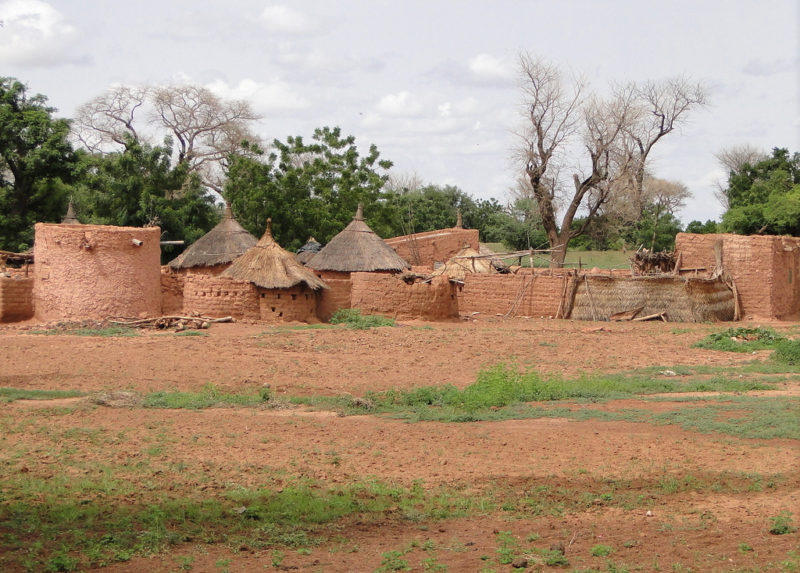- About
- Topics
- Picks
- Audio
- Story
- In-Depth
- Opinion
- News
- Donate
- Signup for our newsletterOur Editors' Best Picks.Send
Read, Debate: Engage.
| February 28, 2022 | |
|---|---|
| topic: | Racism |
| tags: | #environmental racism, #environmental justice, #electronic waste, #discrimination, #racism |
| located: | USA, Mexico, India, Philippines, Malaysia, China, New Zealand, Ghana |
| by: | Gerardo Bandera |
Environmental racism refers to the disproportionate burden of environmental risks and disasters placed on minorities, especially people of colour in lower socio-economic groups. Environmental injustice affects these communities all over the world in various ways - from higher exposure levels of pollution and toxins, habitat destruction, lower qualities of natural resources and environmental amenities, or exploitative dumping. As the world continues to correct the systemic racist regulations that have allowed these disproportionate effects to occur and prepares to implement climate resilience policies to confront the climate crisis, it is important to seek environmental justice for disenfranchised groups of people.
The WHO reports that 91 percent of people live in areas where pollution levels exceed suggested limits, resulting in over 7 million deaths each year. Nevertheless, of those in areas with high pollution levels, people of colour and of lower socio-economic status are subjected to more dangerous levels than white communities or higher socio-economic groups. In the United States, low-income black and hispanic communities have higher levels of exposure to nitrogen dioxide, which is associated with respiratory diseases and infections. Many studies have found similar correlations between high air contamination and low socio-economic status in Hong Kong, New Zealand and Ghana.
Many factors explain these high levels of exposure. Communities with lower income are typically located in areas further from city centres where industrial facilities and factories emit pollutants into the atmosphere. This is especially noticeable in cities that were subject to discriminatory zoning laws or ‘redlining’, which relegated non-white communities to industrial parts of cities and subverted their voting power, effectively reducing their ability to improve their environment.
The 2016 Flint water crisis brought attention to the disproportionate exposure to lead that black communities face in the United States. The town of Flint, Michigan, which is 57 percent African American, was exposed to undrinkable water with sometimes dangerously high levels of lead contamination after the city switched its water supply to a local source to decrease cost. The community’s complaints of foul tasting water and health concerns went largely ignored, demonstrating the propagation of environmental inequality when minority communities’ resources and political power are limited or restrained.
Similarly, communities in Puerto Rico have rallied to protest the disposal of toxic coal ash in landfills that released dangerous toxins (such as arsenic, heavy metals and radioactivity) into their air, affecting the health of local people, who are of a predominantly non-white.
As the world’s electronic waste has multiplied in the past decade, countries and industries have found a neo-colonial solution to skirt costly recycling processes and tough disposal regulations: exporting electronic waste to the global south. An estimated 80 percent of electronic waste is exported to countries in Asia and Africa, some in the guise of ‘donations’ or charity. These countries have limited infrastructure for proper recycling and disposal, which increases the exposure of these toxic materials to the local people.
Surface temperature and natural cooling resources are also unequally distributed depending on race and income. Areas inhabited primarily by lower-income communities have less greenspaces or natural water sources, which reduce surface temperatures. In the United States, for example, these communities, which were subject to ‘redlining’ in the early 20th century, received lower real estate valuation, limited access to credit and systematic disinvestment, resulting in fewer ‘environmental amenities’ that help to decrease surface temperatures and clean air, like green spaces and urban tree canopies. Subject to heatwaves, the communities in these ‘urban heat islands’ face extreme health hazards, especially since in the US, extreme heat has the highest fatality rate of any weather-related disaster.
Climate models predict that world temperatures will soar in the upcoming decades. These rising temperatures will undoubtedly affect communities that are already susceptible to high temperatures and heatwaves, and that have less resources to cool down. Already, communities in Latin America and Asia are seeing the effects of rapid climate change on their livelihoods, affecting their sources of income and physical health, while also deteriorating their environments. These communities and countries do not have the same resources as their well-off neighbours and counterparts in the Global North, which have historically contributed the most to global warming due to rapid and sustained industrialisation. It is therefore important that climate resilience policies prioritise people with less resources who have, in the past, been disenfranchised by racial inequalities and colonial exploitation.
Photo by Hermes Rivera
By copying the embed code below, you agree to adhere to our republishing guidelines.

